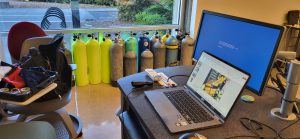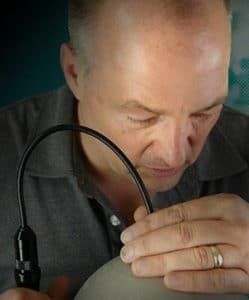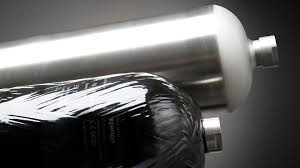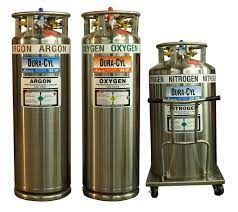
Cylinder Inspection Training: Why a Maintained Cylinder Is a Happy Cylinder
Uncover the importance of gas cylinder inspections and training. Dive deep into ensuring safety, boosting efficiency, and prolonging cylinder life.
Cylinders contain compressed gases at higher than ambient pressure. Pressure release is controlled through the valves and regulators attached to the cylinder. If the valves and regulators are working properly, and used in a safe manner, risk is minimized. If the cylinder is abused, valves not maintained, or the cylinder is mishandled by the user there is a potential for an uncontrolled release of the pressurized gas. The amount of pressure released, and the way it is released is dangerous to the cylinder handler. Uncontrolled release of compressed gases can cause major injuries to the user resulting in serious injury or possible death.
An uncontrolled release of pressure from a cylinder can create a gas jet. The size of the orifice opening, the amount of pressure supplying the jet and the type of gas can all influence its destructive force. Numerous factors come into play including the size and pressure of the cylinder or the type of valve which is misused or damaged. The force of the gas jet can penetrate skin or uncontrollably propel the cylinder.
As little as 100 PSI can penetrate human skin (Zhao, 2016). The severity of the damage is attributed to the distance of the body part from the source. The closer the contact point the greater chance of injury. As the body part is distanced from the source the chance of injury is lessened. Increasing the distance from the source as little as 3 cm can reduce the extent of injury (Zhao, 2016). The distance must be increased based on the pressure created from the jet. Larger orifice openings with a higher supply pressure may require 11’ (341cm) for a safe distance.
The types of injuries are dependent on the exposed body part and its susceptibility to pressure from the gas jet. A direct exposure to the jet can lacerate the skin and cause severe internal damage (Hierner). A major concern is subcutaneous damage of the tissue. The injured person may underestimate the injury and fail to seek immediate medical assistance. The average wait time to treat a pressure related injury is 9 hours before seeing a doctor (Hierner). During this time the pressure and damage caused by the penetration of high-pressure gases may cause irreparable damage from necrosis of the tissue and potential amputation. The visible damage may appear slight (incision) but the internal damage could be devastating.
Sources of the gas jet can come from a variety of components; valves, cylinder failures, burst disc, hoses or high-pressure lines. If these components are working properly and the operator is wearing protective equipment, the chance of injury is minimal. But if any of these components malfunction, and the operator is not protected, serious injuries can occur. Grabbing a cylinder by the valve for movement exposes the hand to the valve orifice. If the valve opens gas can go directly into the hand. Even wearing leather gloves as protection won’t ensure safety. Pressures of 3000 psi will penetrate the glove and skin. (Zhao, 2016)
When a component fails, pieces of the failed component may become part of the jet stream. Small pieces of metal, pieces of the line or particles of the hose may travel with the high-pressure gas. If the gas penetrates the skin, the particles may also enter the skin; becoming a pressure driven missile (Zhao, 2016). Added particles can increase the injury or make post trauma recovery difficult.
Preventing exposure to a gas jet or pressure driven missile requires awareness, preventive measures, distance and proper safety equipment. Inspecting a cylinder, valve and its direct components may identify potential hazards before they become a problem. Repairing or replacing worn parts on a regular basis will help ensure proper operation. And proper inspection may provide warning signs of future concerns.
When preventive measures are not enough, protective equipment and safe handling techniques may help keep an employee safe. Safety glasses can protect against direct exposure to high pressure gas or missiles. Gloves may help protect direct exposure on low pressure gas systems, but that is not a guarantee. Properly moving a component or cylinder, using a hand truck with safety caps installed helps prevent accidental falls. Using all these in combination gives the user/operator the best chance of avoiding injury from injection injuries.
Properly inspecting a cylinder and system, being aware of the hazards of high-pressure gases and training others to be safe is the best way to prevent injuries and death.
Hierner, N. V. (n.d.). High-pressure injection injury of the hand.
Zhao, L. C. (2016). Personnel safety with pressurized gas system. Idaho National Laboratory.

I enjoy continuing to build the business based on safety since 1999. CTS focuses on the inspection of high pressure cylinders, the maintaining of the valves and basic maintenance of high pressure compressor systems. CTS stays current in techniques and tools to train both the new and novice employee. We publish articles, update training tools and have created an APP to assist during the inspection process.
#cylinder #safety #hazmat #training #cylinderinspectiontraining #cylindex

Uncover the importance of gas cylinder inspections and training. Dive deep into ensuring safety, boosting efficiency, and prolonging cylinder life.

Is your composite cylinder showing signs of wear? Discover when to seek a professional repair service in our comprehensive guide.

29 CFR 1910.101 intro Handling cryogenic cylinders involves working with extremely low-temperature gases that pose unique safety risks. To ensure the safe handling, storage, and transportation of these hazardous materials,

Introduction Firefighters encounter many risks while on duty, including hazardous materials and high pressure bottles. High pressure bottles are used for a variety of purposes in firefighting, including powering hydraulic